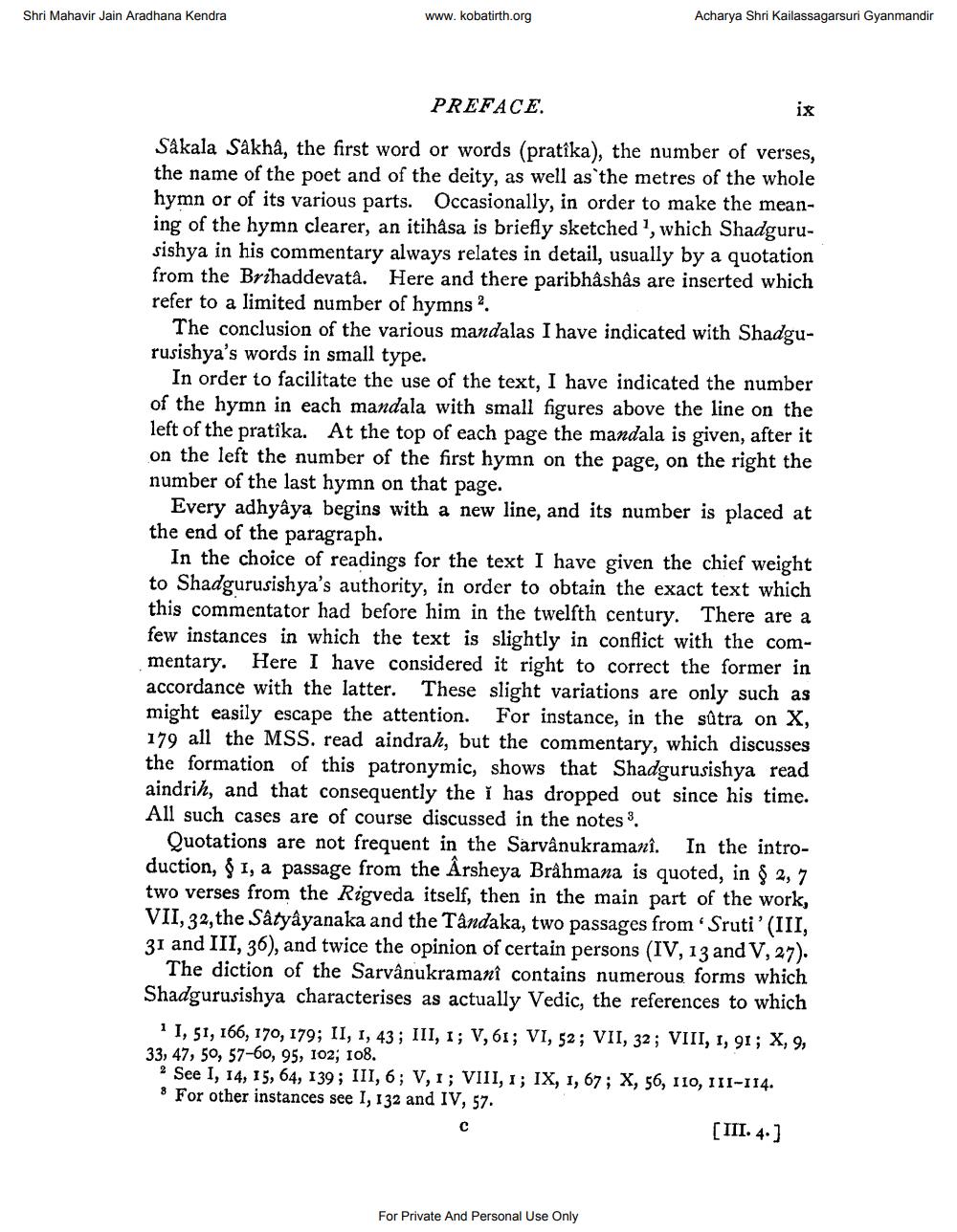________________
Shri Mahavir Jain Aradhana Kendra
www.kobatirth.org
Acharya Shri Kailassagarsuri Gyanmandir
PREFACE
Sakala Sakhâ, the first word or words (pratîka), the number of verses, the name of the poet and of the deity, as well as the metres of the whole hymn or of its various parts. Occasionally, in order to make the meaning of the hymn clearer, an itihâsa is briefly sketched', which Shadgurusishya in his commentary always relates in detail, usually by a quotation from the Brihaddevatâ. Here and there paribhashâs are inserted which refer to a limited number of hymns 2.
The conclusion of the various mandalas I have indicated with Shadgurusishya's words in small type.
In order to facilitate the use of the text, I have indicated the number of the hymn in each mandala with small figures above the line on the left of the pratika. At the top of each page the mandala is given, after it on the left the number of the first hymn on the page, on the right the number of the last hymn on that page.
Every adhyâya begins with a new line, and its number is placed at the end of the paragraph.
In the choice of readings for the text I have given the chief weight to Shadgurusishya's authority, in order to obtain the exact text which this commentator had before him in the twelfth century. There are a few instances in which the text is slightly in conflict with the commentary. Here I have considered it right to correct the former in accordance with the latter. These slight variations are only such as might easily escape the attention. For instance, in the sûtra on X, 179 all the MSS. read aindrah, but the commentary, which discusses the formation of this patronymic, shows that Shadgurusishya read aindrih, and that consequently the i has dropped out since his time. All such cases are of course discussed in the notes
Quotations are not frequent in the Sarvânukramanî. In the introduction, g 1, a passage from the Arsheya Brâhmana is quoted, in $ 2,7 two verses from the Rigveda itself, then in the main part of the work, VII, 32, the Satyâyanaka and the Tândaka, two passages from Sruti'(III, 31 and III, 36), and twice the opinion of certain persons (IV, 13 and V, 27).
The diction of the Sarvânukramanî contains numerous forms which Shadgurusishya characterises as actually Vedic, the references to which
11, 51, 166, 170, 179; II, 1, 43; III, I; V, 61; VI, 52; VII, 32 ; VIII, 1, 91; X, 9, 33, 47, 50, 57-60, 95, 102; 108. ? See I, 14, 15, 64, 139; III, 6; V, 1; VIII, 1; IX, 1, 67; X, 56, 110, 111-114. 8 For other instances see 1, 132 and IV, 57.
[III. 4.)
For Private And Personal Use Only




